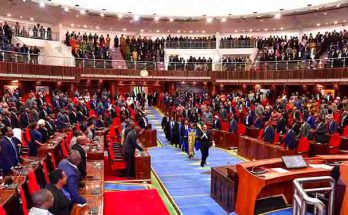 While South Africa works its way through the impact of the latest economic headwinds, the automotive sector is holding its own in a volatile market, Econometrix director and chief economist Dr Azar Jammine said on Wednesday.
While South Africa works its way through the impact of the latest economic headwinds, the automotive sector is holding its own in a volatile market, Econometrix director and chief economist Dr Azar Jammine said on Wednesday.
Despite an expected contraction in domestic vehicle production and sales for this year, the automotive sector remains a large player among South Africa’s exporters, with ample opportunities for further growth in Africa opening up opportunities for the components and parts sector.
Jammine was speaking at a pre-Automechanica business breakfast for existing and potential exhibitors for Messe Frankfurt’s latest trade fair, set to be held at the Johannesburg Expo centre, in Soweto, from September 27 to 30, 2017.
It is expected that new passenger vehicle output will contract by 2.9%, light commercial vehicles (LCVs) by 1.9%, medium commercial vehicles (MCVs) by 1.2% and heavy commercial vehicles (HCVs) by 0.7% this year.
H
owever, by 2018, production will swing back into the positive, with passenger vehicle production growth of 2.9% expected, along with a 0.4%, 0.8% and 0% growth respectively expected for LCVs, MCVs and HCVs.
Further, the downward trend in sales, following a “hammering” of the new vehicle sales market over the past few years, positively benefits the parts and components sector over the next few years.
“Given the fact that there is traditionally a three- to five-year lag between new vehicle sales and replacement parts, this suggests that, by 2020 or so, we could see quite a boom in the parts industry, both for LCVs and HCVs,” he said.
In addition, the automotive sector is experiencing growth within the overall lacklustre manufacturing industry.
“The manufacturing itself is going nowhere fast at 0%, yet the share of the automotive industry within overall manufacturing keeps rising . . . this translates into an improvement in the automotive industry’s, including parts, share of gross domestic product.”
South Africa remains “easily the biggest” vehicle market in Africa – accounting for 37% of passenger vehicle sales and 56% of commercial vehicle sales in 2016 – followed by Egypt and Morocco.
The automotive export share as a percentage of South Africa’s total mechanise export has risen to an all time high at 15.6% and the country’s export markets, including Germany, Belgium and the UK, remained strong, with the European Union accounting for 50% of the country’s exports.
However, exports to Africa were also rising.
Africa accounts for 18% of South Africa’s automotive exports, and this is rising rapidly.
There are outstanding export prospects immediately to the north of us, as other African economies, particularly East Africa, boast attractive economic growth over the next few years.
Further, South Africa’s trade balance has also improved, contracting from a trade deficit of R42.3-billion in 2012 to R32.9-billion in 2016.
Automotive imports were up 48.7% from 2012 to 2016 and exports up 80.3% over the same period.
“So, relatively speaking, the automotive sector is holding itself well in terms of trade with other countries,” Jammine commented.
Automechanika Johannesburg 2017 will be colocated with Futuroad Expo, an international truck, bus and trailer show that replaces the Truck and Bus show of the Johannesburg International Motor Show, and Scalex Johannesburg, a trade fair for transport systems, infrastructure and logistics solutions.
South Africa Shows Messe Frankfurt CEO Konstantin von Vieregge said the company would embark on a road show to Namibia, Zambia, Kenya and Mozambique, besides others, in an effort to attract companies and visitors from other African countries.



